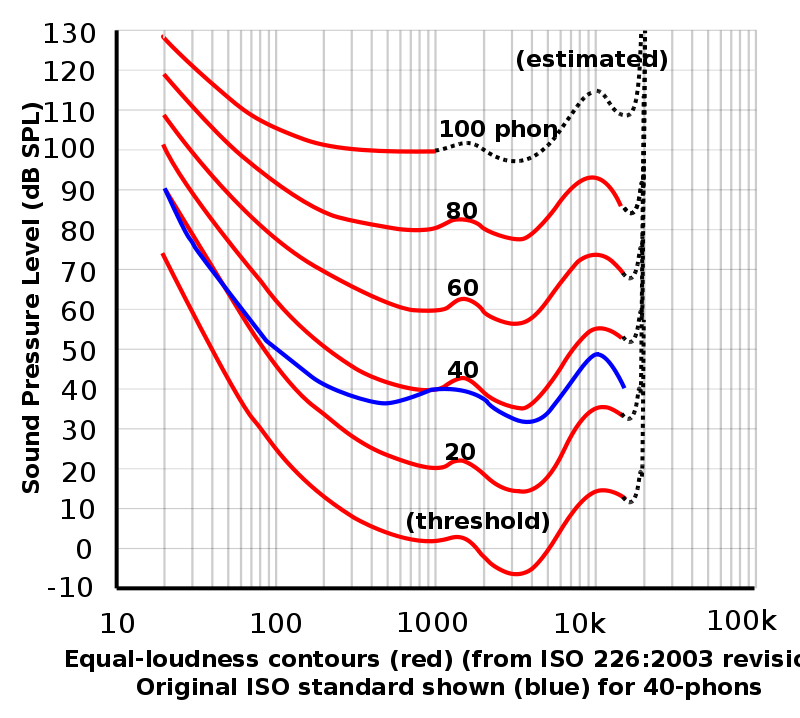https://youtu.be/2k_mX7BJ3_Q
The Solution
https://youtu.be/JVa2FkBP9wA
Both videos are very good in explaining what the often referred 'bad' digital - sound actually is; its harshness in the Area our Ears are most sensible to, about 2KHz to 4Khz (Fletcher Munson Curve).

So in conclusion there is no such thing as bad 'sounding' digital - audio, its basically Aliasing from plugins adding up and getting too prominent in our most sensitive hearing - range. Thus causing ear - fatigue and an overall unpleasing 'harsh' digital - sound.
An interesting read about all of this (for those who have time) is over at GS.
https://gearspace.com/board/music-compu ... d2c10554ddTechnical background:
Simulation of analog sound like saturation from transformers, compressors, tape, EQs,... makes the creation of harmonics necessary.
Hardware:
When analog gear is recorded, it doesn't matter if that gear creates harmonic content exceeding Nyquist frequency, because all A/D-converters use steep lopass filters and get rid of any frequencies above Nyquist frequency (sampling frequency/2) and therefore prevent aliasing artifacts.
48 kHz sampling f = 24 kHz Nyquist = highest detectable frequency
ITB:
If harmonics are created by plugins, frequencies within the plugin are created which easily could exceed the current Nyquist frequency of the project.
For example smashing hihats or cymbals (which have significant amplitudes in the 10 kHz range) with a compressor and/or tape saturation, means - for example - the 3rd harmonics of the 10 kHz already appear @30 kHz.
That means, if the DAW runs @44 kHz (Nyquist = 22 kHz) and the plugin developer does not care abut that problem, that 3rd harmonics created in the plugin will appear below Nyquist in the audible treble range at 14 kHz.
example 4th harmonics of 10 kHz = 40 kHz -> that inaudible 4th harmonics of 10k reappears at 4 kHz in the audible range...
So an aliased 14 kHz / 4 kHz signal is added to the cymbals track (ofcourse not only these two frequencies, because the cymbals are not only @10 kHz, but all harmonic multiples of the frequencies in the original signal above Nyquist are folded down into the audible range).
In contrast any recorded analog gear would be free of these aliasing "signals".
What makes things worse: the aliased, downfolded, unwanted frequencies add unwanted signal energy to the frequency range they appear in. They add "treble" energy by adding garbage. They increase signal energy in the mids, but its garbage.
If a SNR of 65 dB is assumed as technically acceptable minimum between the signal and any unwanted "noise" (aliasing frequencies technically are not noise, but are unwanted garbage just like noise), the anti-alias filtering taking place in the plugin should keep any harmonics below that level.
It should also be kept in mind, that usually lots of additional processing is taking place with the signal after harmonic content has been added by a plugin: once a "analog" plugin has injected audible aliasing garbage into the signal, its not possible to get rid of it ever again.
Furthermore there are a few other Techniques to add (next to the more classical approaches from above) like ultrasonic - filtering, using a Wrapper with OS or bumping your Project's Samplerate up, even exporting at higher SR's and then downsampling can work.
The most easiest and effective Way yet, might still be to just use Plugins with OS including internally oversampling the Delta - Path or other nice Geekery.



